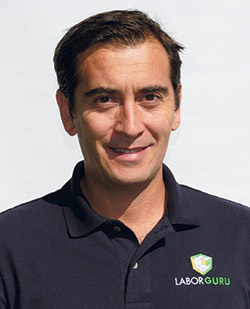Simulations are all around us.
 Ignacio Goris, Labor GuruWhether your children immerse themselves in Fortnite or you play the latest version of Madden NFL, the realism and intelligence of the computer-based agents are amazing. In our daily lives, we also depend on traffic apps that use live information to simulate different travel paths and recommend which way to go to get to our destinations faster. We use these simulations every day to entertain ourselves or make decisions in our personal lives. But what if you could use similar technology to help design a restaurant?
Ignacio Goris, Labor GuruWhether your children immerse themselves in Fortnite or you play the latest version of Madden NFL, the realism and intelligence of the computer-based agents are amazing. In our daily lives, we also depend on traffic apps that use live information to simulate different travel paths and recommend which way to go to get to our destinations faster. We use these simulations every day to entertain ourselves or make decisions in our personal lives. But what if you could use similar technology to help design a restaurant?
Some operators may already take virtual tours of new locations before they open using three-dimensional layouts provided by the project’s architects. No doubt, that’s impactful when it comes to making design decisions. But what if you could actually run your restaurant before it even opens to understand how it will perform? That’s an option today as it may finally be time to use intelligent object-based simulation modeling as a mainstream tool to design restaurants.
Computer simulation has been around for years and it is widely used in manufacturing and healthcare. A Forbes article describing how digital twins are currently being used, including in hospitality, provides a good reference point. Even though we had suggested its use to test designs in various foodservice applications, the response was mediocre at best. Until now. We can attribute the change to the pandemic and the need to continue to test alternatives in a virtual way, or it may be the improved software options; the fact is that operators are more open to the idea of computer simulation than ever before.
Using computer simulation to evaluate restaurant designs allows project teams to closely examine the performance of the system as a whole instead of focusing on individual components. The traditional techniques we use to determine the right equipment or labor capacity to support a desired guest volume don’t typically provide performance metrics of the facility. For example, using traditional capacity planning we can very confidently tell an operator that four fry baskets will be sufficient to support sales of $1,000 per hour. In contrast, we could not make conclusions about the expected overall speed of service the guest might experience due to fryer delays. Nor could we quantify the impact to throughput due to running out of product.
Computer simulation provides these insights — and more — that enable the project team to make design changes that might be expensive to test in real life. As a result, the project team can fine-tune performance before the restaurant even opens.
Take, for example, the drive-thru. Using this approach, it becomes easier to determine the ideal spacing between the pickup window and the order board. The project team can also explore the impact of adding a second order board.
When using simulation, it is very important to set goals and define expectations about what you hope to learn from the simulated environment. It’s equally important to understand what you won’t get, too. Here are three key steps that should be part of the process:
- Even though you can build a very realistic and complex model, always strive for the simplest approach that will accurately answer the question at hand.
- Determine whether the model is going to be built in-house or if you will outsource the process. Then ask whether the results will be evaluated internally. Typically, the initial model is built by an outside vendor. When companies have the know-how on staff, they can update the models and design as new questions come up.
- The data fed into the model plays a critical role in its success and relevancy. The model will only be as realistic and precise as the data put into it. For the model to represent the reality of the restaurant operation, key data points will include cook cycles, employee loading, unloading and assembly cycles, equipment capacity, process flows for guest and for product, etc. Be ready to get in the trenches and get support from the IT department to gather some of this information.
Concepts considering ramping up construction are prime targets for simulation exercises. The insights and learnings that project teams can get from the simulated restaurant can save money on every unit coming down the pipeline avoiding expensive or impossible remodels once the units are open.




